Many see the Nazi regime that ruled Germany from 1933 to 1945 solely as a political movement. Nazi Germany was not just a society ruled by a dictatorship. National Socialist ideology went much further. The Nazi movement attempted to control the minds and actions of all citizens living under their Reich.
The totalitarian nature of the Nazi German regime meant that it had to control and regulate all aspects of German life. Other dictatorial regimes relied on pre-existing powers to control the population, such as the different religious denominations or well-established civil institutions.
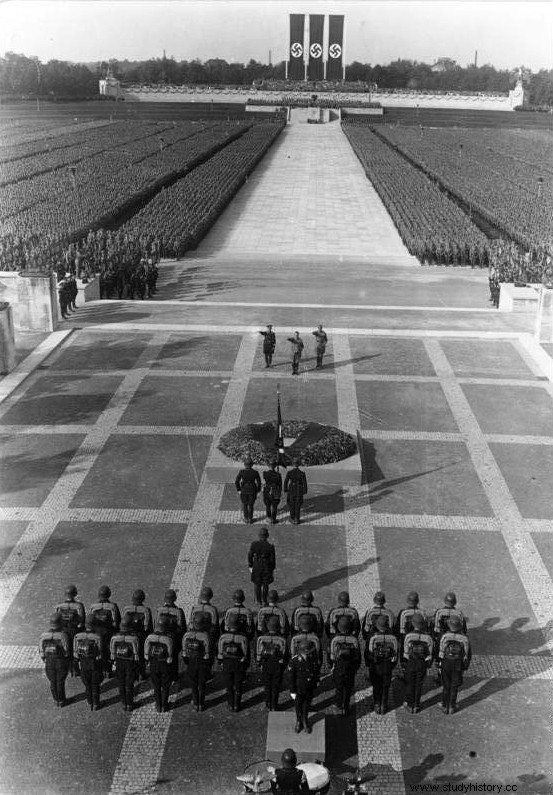
Adolf Hitler's regime went much further. Just as the Bolsheviks had done in Russia, they wanted to create a completely new society, where all institutions would bear the Nazi stamp. The school, family relationships, the vision of life, social relationships and of course, religion, had to be reformed or even renewed from scratch.
The religious foundations of Nazi Germany
Although it may seem that Germany is a homogeneous country, this illusion can only be perceived from the prism of nineteenth-century speciesist nationalism, through which it was justified that different historically divided countries should be united by the fact that their peoples belonged to the same culture . This meant that, even if they had historically been in conflict or had never been united, states where the population was of the same race or spoke the same language justified their union.
Germany is therefore a country of this type, where the only connecting link is the German language. This means that by 1933, less than 70 years after the country's creation, Germany was completely religiously heterogeneous. The main confessions were Protestant and Catholic Christians, although there was also a presence of Calvinist Christians, Jews, Freemasons or Jehovah's Witnesses.
The creation of a new Nazi religion
Within the belief that all people, united by their race and language, should also share the same religion, the Nazis sought beliefs to impose on all people. Christianity, of Jewish origin, was seen as a threat to the Aryan race, so it had to be fought. A large number of religious went through concentration camps in their attempt to eradicate these beliefs.
Removing previous beliefs was not enough. It was necessary to create new ones on which to justify the actions of the party. Those in charge of creating the new Nazi religion were the members of Heinrich Himmler's SS.

Himmler, although of Catholic education, soon rejected these beliefs to enter the world of occultism and pagan beliefs. Not only Himmler, but most Nazi leaders had some kind of relationship with these practices, quite widespread in Northern Europe since the 19th century.
Unlike the Marxist doctrine, Nazism based its theories on mystical beliefs. According to Nazi belief, the people of Atlantis, a race of superior human beings, had survived the collapse of the mythical civilization. Their ancestors could be found everywhere in the world:in the city of Tiahuanaco in Bolivia, in Tibet or in the Nordic Europeans.
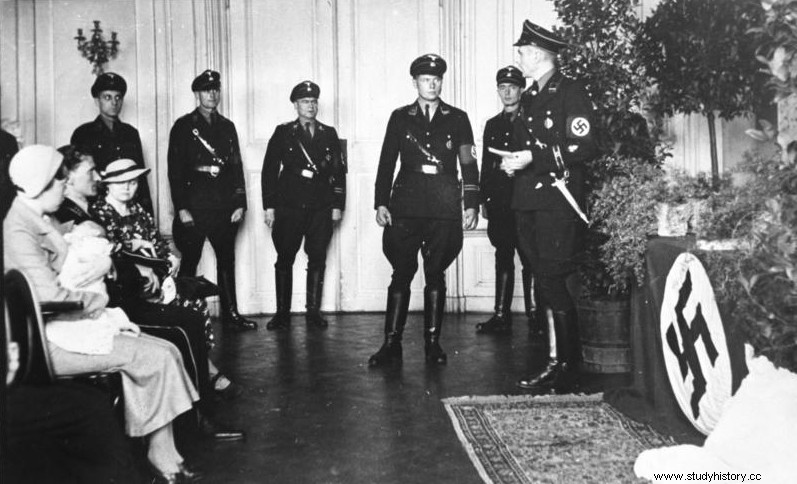
According to SS theorists, the pagan rituals of the Germanic and other ancient cultures would have transmitted Atlantean knowledge through the centuries. Christianity, by eliminating these practices, would have deprived the Aryans of their ancestral knowledge, so Nazi Germany had to restore them if it wanted to return the role of masters of the world to the Aryan race.
Rituals in Nazi Germany
In addition to the doctrine, any religion is based on its rites. Nazi Germany had to create new rites to replace the well-established Christian rites. For this he readapted the Christian rites turning them into pagan rites.
Holidays such as Christmas were suppressed, although not prohibited. New festivals were established, such as the celebration of the winter or summer solstices. The main symbol of Christianity, the cross, was replaced by the swastika. The worship of Christ or the saints was eliminated by the worship of Hitler and other Nazi party leaders.

The rituals were also modified. Christian baptism was modified to create a rite of entry into the Nazi community, where the altar with the cross was replaced by one where the swastika and Hitler's portrait were present. Marriage also adapted to new practices.

The great party events were designed as religious events, where the ecstasy that the attendees reached produced a high level of well-being due to the feeling of belonging to a whole. This communion between all the members of the group is one of the elements best remembered by those who attended these events in the first person.
A Vatican for Nazi Germany
The creation of a new religion also meant articulating a new ecclesiastical hierarchy. At the center of Nazi religious power would be Heinrich Himmler and his SS. The place to place the center of the spiritual power of the Reich was the castle of Wewelsburg, near Dortmund.
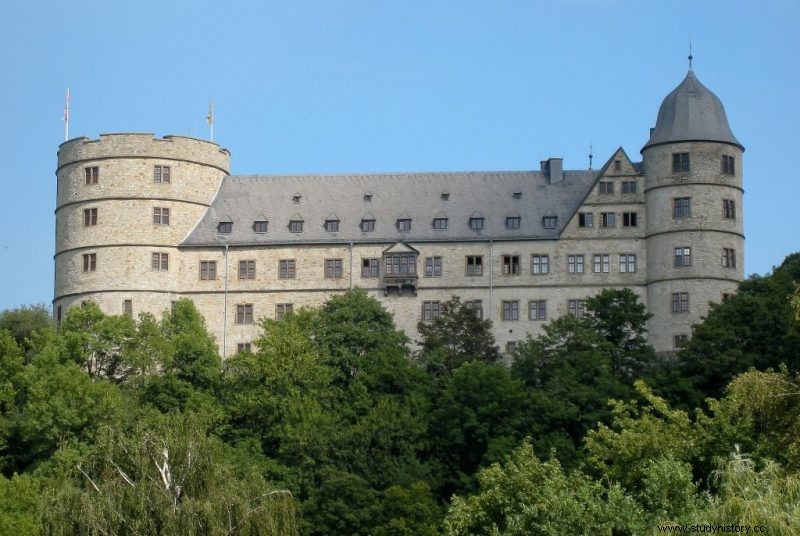
This medieval castle, with a triangular shape, would be the seed of a huge complex of buildings, where the SS would have its religious headquarters. Here the new priests of the Nazi cult could be instructed, in addition to giving shelter to pilgrims and other visitors.
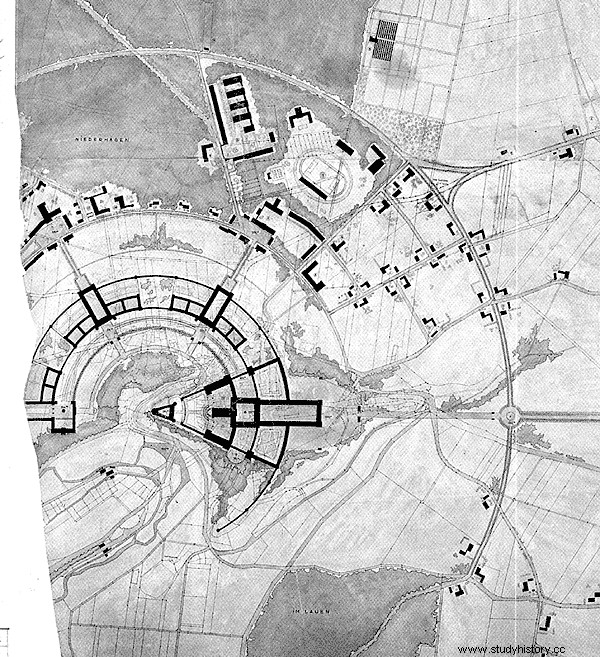
The central element of the religious complex would be the castle itself, where the meeting place of the inner circle of the SS knights would be found. Two large rooms were created in the main tower. The lower one, located underground, would be used for initiation rituals. in the upper one there would be the meeting room where the 13 SS generals would deliberate on all kinds of topics.
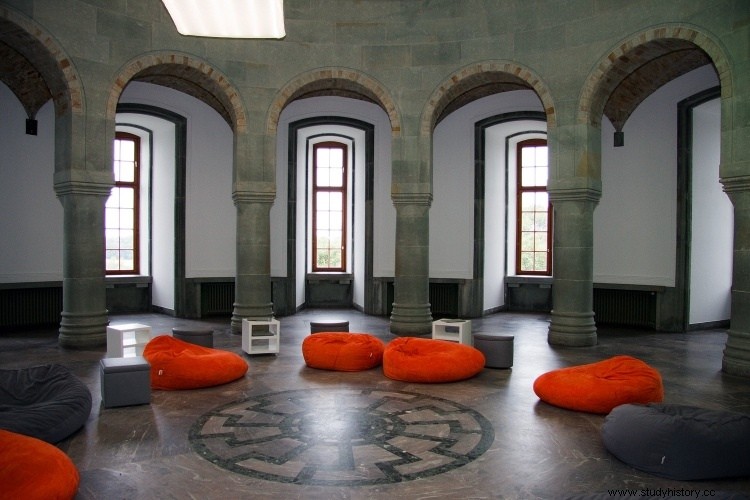
Wewelsburg's conception was based on the Arthurian Grail legends. The 13 SS generals referred to King Arthur and his 12 Knights of the Round Table. The Grail was also believed to be a physical object, which had to be found by the Nazis to ensure the success of their ideology.
